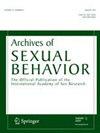Female Autoandrophilia
Abstract
A growing body of research suggests that males can have internalized sexualities such as autogynephilia (sexual attraction to the thought or image of oneself as female) which lead to the development of trans identity. Here I present evidence that females can have analogous internalized sexualities such as autoandrophilia (sexual attraction to the thought or image of oneself as male) which similarly lead to the development of trans identity. The case for female autoandrophilia presented here uses both direct and indirect lines of evidence. Female autoandrophilia is directly evidenced by cross-gender eroticism such as sexual arousal from dressing as male or imagining oneself as male. Qualitative evidence of cross-gender eroticism is found in firsthand narratives which depict female sexual interest in being male or masculine. Quantitative evidence of cross-gender eroticism is found in paraphilia prevalence surveys which reliably find that some females endorse measures of cross-gender eroticism. Indirect evidence for female autoandrophilia is found in the broader observation that some females report rarer forms of trans identity (e.g., animal identity) and eroticism consistent with internalized sexuality (e.g., sexual fantasies of being an animal), and that transgender identity arises among them at elevated rates. A simple, straightforward explanation for these various observations is that females can have internalized sexualities such as autoandrophilia which lead to corresponding forms of trans identity. Female autoandrophilia and male autogynephilia appear to be analogous forms of internalized heterosexuality—a type of sexuality which can collectively be described as autoheterosexuality (attraction to oneself as the other sex).

 求助内容:
求助内容: 应助结果提醒方式:
应助结果提醒方式:


